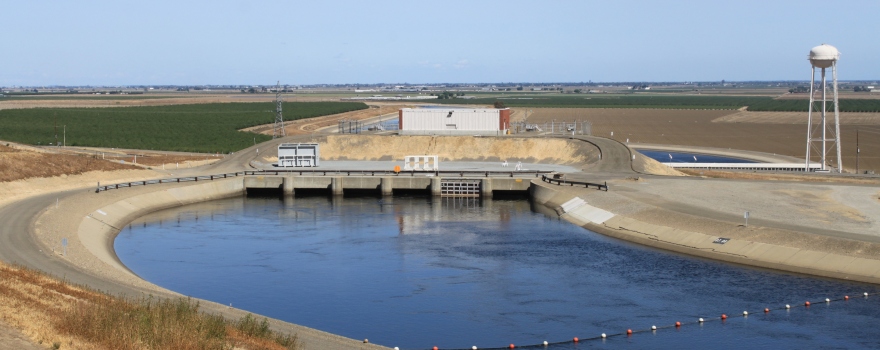
Presentation Covers the History, Physical Features, Statutory Authorities, Contractual Terms, Significant Legal Decisions, and Cost Allocation Framework of the State Water Project
At the January 2019 meeting of Metropolitan’s Finance and Insurance Committee, Metropolitan staff began what was intended to be a series of presentations to provide committee members with information to determine how Metropolitan should address its California Water Fix costs. While the Cal Water Fix process appears to be in limbo while everyone waits to see what the new project will look like given Governor Newsom’s new water resilience portfolio initiative, this particular presentation gives useful background information on the State Water Project, including a brief history, physical features, statutory authorities, contract and terms, significant legal decisions, and the cost allocation framework.
The presentation was given by John Schlotterbeck, Senior Deputy General Counsel.
FIRST, A BRIEF HISTORY
 To understand the State Water Project, you have to understand the history, began John Schlotterbeck. Gold was discovered in 1848 in Sutter’s Mill. California became a state in 1850, which was about the time that most of the easy gold ran out, and miners turned to the practice of hydraulic mining to try and capture the rest of the gold that was in the hills.
To understand the State Water Project, you have to understand the history, began John Schlotterbeck. Gold was discovered in 1848 in Sutter’s Mill. California became a state in 1850, which was about the time that most of the easy gold ran out, and miners turned to the practice of hydraulic mining to try and capture the rest of the gold that was in the hills.
“That practice really transformed the way that people thought about the resources within California and how to put them to use, especially water,” he said. “The gold did run out but the people did not leave, and many of them turned to agriculture to try and make a living.”
In 1873, President Grant commissioned a study by Colonel Alexander of the US Army Corps of Engineers that focused mainly on the Central Valley and Sierra watersheds. The report recommended development of those watersheds for mostly agricultural use. About 5 years later, a five-year study of Sacramento Valley rivers was completed by the state engineer William Hammond Hall who largely concurred with the conclusions of Colonel Alexander in terms of development of the water resources within the Central Valley.
Notwithstanding those early investigations, most of the development within the state occurred on a local or regional level. The first aqueduct was completed that brought water from the Owens Valley to the City of Los Angeles. About the same time, in 1913 the Raker Act was adopted by the federal government which allowed the city and county of San Francisco to dam the Tuolumne River to provide for its uses; the dam was completed in 1923 and water started flowing to the city of San Francisco by 1934. Metropolitan formed in 1928 and the Colorado Aqueduct completed in 1935 with first deliveries in 1941.
 The first statewide water project concept was developed in 1919, and that was followed by the first State Water Plan, Bulletin 25. It would be a precursor to other subsequent plans, but it was the first report to recommend statewide development of water resources from north to south.
The first statewide water project concept was developed in 1919, and that was followed by the first State Water Plan, Bulletin 25. It would be a precursor to other subsequent plans, but it was the first report to recommend statewide development of water resources from north to south.
To implement the State Water Plan, the state adopted the Central Valley Project Act. “We tend to think of that as a federal act, but there is the state act that was adopted in 1933,” said Mr. Schlotterbeck. “It provided for the issuance of bonds to pay for the development of the Central Valley Project; unfortunately, because of the Depression, they were unmarketable. So that’s why most of the development occurred at the local level and it sat dormant for a couple decades.”
[Maven note: Mr. Schlotterbeck failed to mention the construction of the Central Valley Project, which began in 1933. Click here for more information on the Central Valley Project. I assume the omission is because this presentation is focused on the State Water Project.]After World War II, there was a huge influx of population into the state, and it was clear that more water resources were needed within California to support a larger population, he said.
The Feather River Project, as it was then known, was presented to the legislature in 1951. About the same time, the California Water Plan was issued which laid out the framework for development of the state resources. In the same year, initial work started on the Feather River project, so construction of Oroville Dam actually began before the adoption of the Burns Porter Act.
 The Burns Porter Act passed in 1960 that authorized general obligation bonds to fund initial construction of the State Water Resources Development System. In the same year, Metropolitan Water District signed its contract for state water which served as the prototype contract for all the others that followed.
The Burns Porter Act passed in 1960 that authorized general obligation bonds to fund initial construction of the State Water Resources Development System. In the same year, Metropolitan Water District signed its contract for state water which served as the prototype contract for all the others that followed.
The State Water Project’s first deliveries were to the South Bay in 1962. The first deliveries to Metropolitan were via the West Branch in 1972. The East Branch came online a year later. Mr. Schlotterbeck noted that before Metropolitan had received any water, they had paid approximately $118 million towards the construction of the project.
The Coastal Branch was completed in 1998. The first phase of the East Branch extension was completed in 2003 and the second phase completed in 2018.
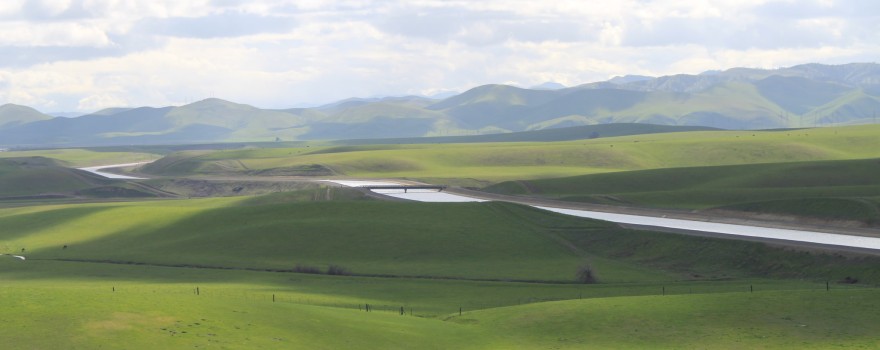
PHYSICAL FEATURES
 The State Water Project has 20 pumping plants, 5 hydroelectric power plants, 4 pumping-generating stations, 700 miles of canals, tunnels, and pipelines, and 34 storage facilities.
The State Water Project has 20 pumping plants, 5 hydroelectric power plants, 4 pumping-generating stations, 700 miles of canals, tunnels, and pipelines, and 34 storage facilities.
Lake Oroville is the principal feature of the project that stores approximately 3 MAF. Water is generally released through the Hyatt Powerplant, and coupled with the rest of that complex known as the Hyatt-Thermalito complex, it provides roughly 25% of the power the project uses on an annual basis.
“It is my understanding that the project is both the largest single power user and the largest single power producer in the state,” said Mr. Schlotterbeck.
The water travels down the Feather River, flows across the Delta to the Banks Pumping Plant in the south Delta which pumps it into the California Aqueduct.
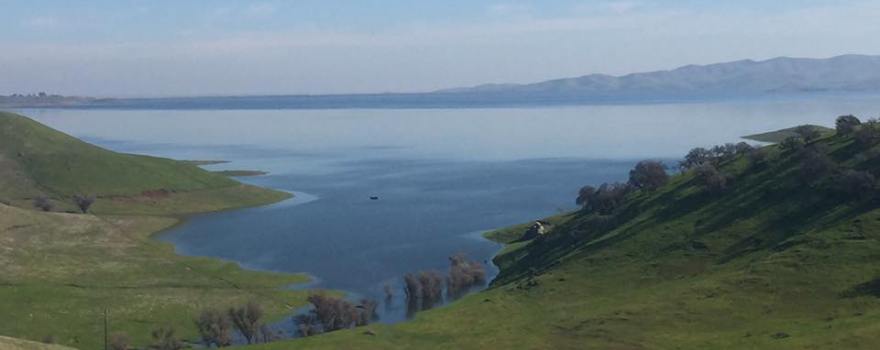
 The San Luis Reservoir is a joint-use facility that holds approximately 2 MAF, about half of which is for use by the State Water Project and the other half is for the federal Central Valley Project. The Gianelli Pumping Plant is the facility that moves it back and forth into the California Aqueduct.
The San Luis Reservoir is a joint-use facility that holds approximately 2 MAF, about half of which is for use by the State Water Project and the other half is for the federal Central Valley Project. The Gianelli Pumping Plant is the facility that moves it back and forth into the California Aqueduct.
At the bottom of the Tehachapis, the Edmonston Pumping Plant lifts the water up over 2000 feet, the single largest lift, and then it moves into one of two branches, the west branch with goes to the Castaic Power Plant and into Castaic Lake, the east branch goes through the Devils Canyon Power Plant and into Lake Perris. In addition to providing water storage, Lake Perris is one of the most heavily used facilities within the state for recreational purposes, he said.
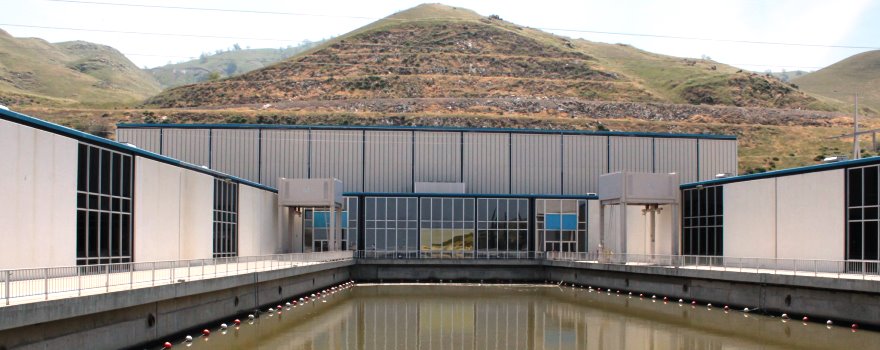
STATUTORY AUTHORITIES
 The first legislation with respect to water projects was the Central Valley Project Act, adopted in 1933, which is the legislation that provides the overarching legal structure for construction, operation, and financing the Central Valley Project.
The first legislation with respect to water projects was the Central Valley Project Act, adopted in 1933, which is the legislation that provides the overarching legal structure for construction, operation, and financing the Central Valley Project.
“When I say ‘Central Valley Project,’ there are multiple components to that project, including the Feather River and the Sacramento-San Joaquin Delta projects that are set forth in the California Water Plan and any other modifications as the Department of Water Resources might adopt,” Mr. Schlotterbeck explained. “That’s all part of the State Central Valley Project Act. Importantly, it is the authority that allows us to issue revenue bonds to construct the State Water Project, and that’s really what we rely on these days.”
 Mr. Schlotterbeck said that the Act also provides that any units or portions of the Feather River Project may be constructed and operated separate and apart from other parts of the Central Valley Project, so even though it was part of that Act, they recognized that it may be a stand-alone facility.
Mr. Schlotterbeck said that the Act also provides that any units or portions of the Feather River Project may be constructed and operated separate and apart from other parts of the Central Valley Project, so even though it was part of that Act, they recognized that it may be a stand-alone facility.
The Central Valley Project Act is the basis for DWR’s authority to enter into contracts with various entities, including private and public, to purchase or use water, water flow, water storage, electric power, and any other resources or facilities that are made available by the project, and it gives DWR the authority to set prices, rates, and charges for use of those resources and facilities. The Act also has certain revenue requirements that say that those prices, rates, and charges must be sufficient to pay all project costs, which is the origin of the cost recovery. From that point forward, the focus of DWR has been on cost recovery with respect to the State Water Project, he said.
 The Burns Porter Act was adopted by the legislature in 1960 and later ratified by the voters. It incorporates all of the Central Valley Project Act provisions by reference, and it authorized the issuance of $1.75 billion in general obligation bonds for construction of the State Water Resources Development System, which includes the State Water Project as a component, he said.
The Burns Porter Act was adopted by the legislature in 1960 and later ratified by the voters. It incorporates all of the Central Valley Project Act provisions by reference, and it authorized the issuance of $1.75 billion in general obligation bonds for construction of the State Water Resources Development System, which includes the State Water Project as a component, he said.
“The Burns Porter Act was really the seed money that got the project going,” said Mr. Schlotterbeck. “It established certain priorities for the use of income and revenues derived from storage resources and facilities. Interestingly enough, at least in the Burns Porter Act, operation and maintenance comes ahead of payment of principal and interest on the general obligation bonds.”
 The Davis Dolwig Act was adopted in 1961, which requires fish and wildlife enhancement and recreation to be incorporated as features of the Central Valley Project, State Central Valley Project, and the storage system to the extent it is consistent with other uses.
The Davis Dolwig Act was adopted in 1961, which requires fish and wildlife enhancement and recreation to be incorporated as features of the Central Valley Project, State Central Valley Project, and the storage system to the extent it is consistent with other uses.
“It designated those what are sometimes referred to as FWER (Fish and Wildlife Enhancement and Recreation) costs as non-reimbursable costs to be paid by the state,” he said. “But it notes that prices, rates, and charges for the use of water and power facilities are to include the cost of fish and wildlife preservation, so it creates a distinction between recreation and fish and wildlife enhancement versus mitigation and preservation.”
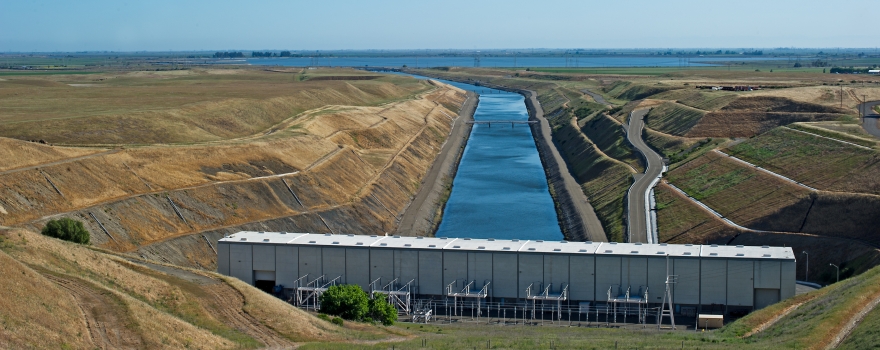
CONTRACTUAL TERMS
 The contracting principles were issued by Governor Edmund Brown in January 1960. Costs were to be allocated among water supply, flood control, recreation, and enhancement of fish and wildlife, drainage, and quality control.
The contracting principles were issued by Governor Edmund Brown in January 1960. Costs were to be allocated among water supply, flood control, recreation, and enhancement of fish and wildlife, drainage, and quality control.
“It’s continuing that idea of allocation among project purposes, as well as in it says, ‘and such other functions may be performed by the particular facility or facilities under consideration,’” said Mr. Schlotterbeck.
The principles also said that charges for water and power and other reimbursable items were to be based on recovery of costs. “It is the first time where we start to have a division between what we think of as supply and conveyance or conservation and transportation; it said costs are to be divided between the Delta water rate and the transportation rate, and then those get further subdivided into what we think of as capital, minimum, and variable.”
The contracting principles are important because they were intended to guide the development of the prototype contract and are therefore helpful to understand the parties intent with respect to the original contract terms and conditions, he explained, acknowledging that they are not binding with respect to subsequent modifications and amendments.
 The long-term contract is about 140 pages long. Some of the key provisions are that the contract provides certain participation rights, but it doesn’t guarantee a particular amount of water. DWR is the owner and operator of the facilities but the contract grants certain rights to use those facilities. The contractor’s obligation is to repay the actual cost associated with the water supply purpose. There’s no fixed charge for water; contractors pay regardless of the amount of water received.
The long-term contract is about 140 pages long. Some of the key provisions are that the contract provides certain participation rights, but it doesn’t guarantee a particular amount of water. DWR is the owner and operator of the facilities but the contract grants certain rights to use those facilities. The contractor’s obligation is to repay the actual cost associated with the water supply purpose. There’s no fixed charge for water; contractors pay regardless of the amount of water received.
“We paid, even if we didn’t have a system that was up and running yet,” he said. “We made significant payments prior to receiving a drop of water from the project, so that’s something to keep in mind.”
There’s a division between the water supply and conveyance facilities; the Burns Porter Act did not make the distinction, but the contract does start to provide a distinction between those two terms. Conservation facilities or the water supply components of the State Water Project ae defined in the contract as the master levees, control structures and channel improvements ‘to the extent they serve the purposes of water conservation in the Delta, water supply in the Delta and transfer of water across the Delta.’ Conveyance and transportation facilities are defined as the Include an aqueduct system ‘for transportation of water from a point or points at or near the Sacramento-San Joaquin Delta’ consisting of ‘intake and diversion works, conduits, tunnels, siphons, pipelines, dams, reservoirs, and pumping facilities.’
“Even within the contract, there is a certain amount of overlap between the terms that relate to conservation and supply versus transportation and conveyance,” said Mr. Schlotterbeck. “It tends to be pretty clear when things are north of the Delta, and pretty clear when things are south of the Delta, but when you’re at or near the Delta, I think there’s a recognition that there could be dual purposes.”
These conservation and transportation facility charges are collected through the Delta water rate and the transportation rate.
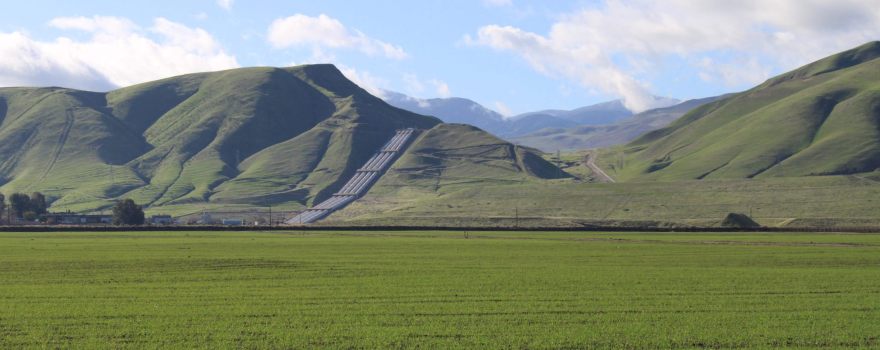
Articles 1, 22 and 23 of the long-term contract recognize the dual supply and conveyance functions of SWP facilities of the Banks Pumping Plant, reaches 1 to 3 of the California Aqueduct, the San Luis Forebay, and the San Luis Reservoir.

The contract gives DWR some flexibility in determining which project costs are reimbursable how to allocate them between the Delta water rate and the transportation rate. There is a general obligation not to be arbitrary or capricious or unreasonable in doing those allocations.
Mr. Schlotterbeck said there are a few important caveats. The terms ‘water’ and ‘water supply’ as used in the contracts are really to distinguish between reimbursable and non-reimbursable purposes, not to identify specific functions of particular facilities. He also noted that the costs from major State Water Project facilities constructed after 1987 have not been included in either the Delta water rate or the transportation rate, but have been billed separately.
He noted that once a cost is assigned a particular allocation or category, it can get reclassified on further review. One example is Delta facilities; they used to have about a 14% recreational allocation which was reduced to about 3.4% largely because the original peripheral canal project never went through and it was supposed to provide a number of recreation facilities. Another example is Lake Perris, which initially had a recreation purpose of 5% that was revised up to about 33% in 2013.
Project purposes can similarly be revised. He noted that Oroville relicensing costs were initially put into the Delta water rate; it was actually determined it should be over in the transportation rate. Cost categories can change; the Hyatt turbine rehabilitation was initially being billed through the Delta minimum and was later shifted over to a capital charge.
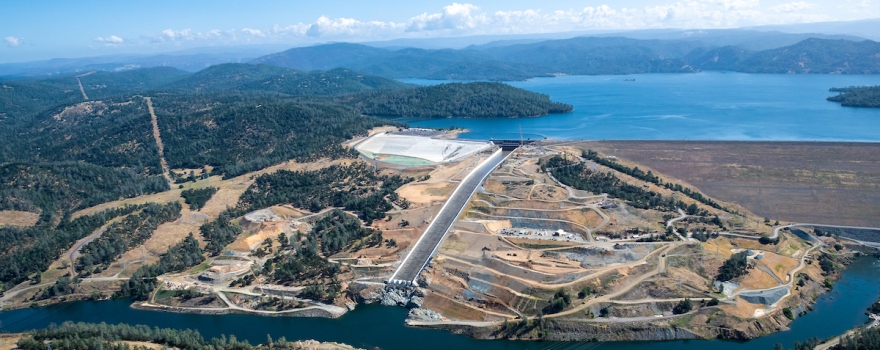
MONTEREY AMENDMENT
The Monterey Amendment was the first global amendment to the contract. It established a pro-rata sharing of shortages and provided greater flexibility for the State Water Project contractors. Among other things, it allowed for storage outside the district, it allowed for the storage and conveyance of non-project water, it provided for certain carryover storage within Oroville and San Luis, and provided flexible storage in Perris and Castaic, among other things. It also improved the financial integrity of the State Water Project including credits for excess system revenues.
“From my perspective, the importance of the Monterey Amendment was that it was really the first time that we took a system that was pretty closed, dealing solely with project water, and opened it up,” Mr. Schlotterbeck said. “It recognized that the contractors as the primary people responsible for paying the costs should also be the primary beneficiaries, and it gave them greater latitude and how they used the facilities, and that’s something that’s continued to this day. One of the things in the Cal Water Fix proposed amendment is greater water management provisions and flexibility, so it’s kind of a process that’s continuing.”
- MWD v. Marquardt (1963): Validated prototype contract
- Warne v. Harkness (1963): Held Burns-Porter Act and CVP Act provided independent bases for financing SWP: “The assertion there was that the Burns Porter Act trumped the Central Valley Project Act and made it irrelevant and the court rejected that claim, and that’s good because we use revenue bonds now almost exclusively to deal with the State Water Project,” Mr. Schlotterbeck said.
- Goodman v. County of Riverside (1981): Upheld use of ad valorem taxes to pay SWP costs as voter-approved indebtedness under Prop 13; it also noted contractors ultimately responsible for indebtedness and State was mere conduit for contract payments. “The court held that basically it fell within the voter approved indebtedness of Prop 13. They rejected the argument that even if it was the indebtedness of the state, it wasn’t really the indebtedness of the district or the agency. And in that regard, it noted that basically the state was basically a conduit for the funds that were going into the general fund.”
- SDCWA v. MWD (2017): The court held SWP transportation system is an integrated part of Metropolitan’s transportation system.
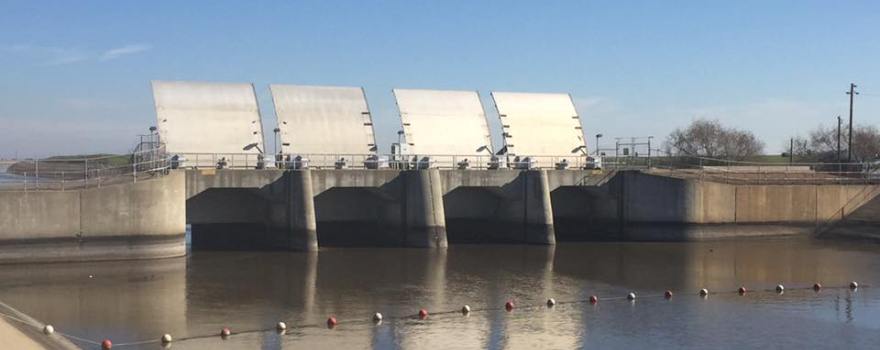
COST ALLOCATION FRAMEWORK
 Mr. Schlotterbeck presented a slide showing the hierarchy of the facilities. The State Water Resources Development System has three types of facilities: The State Water Facilities, the additional facilities authorized by the legislature, and any additional facilities deemed necessary or desirable by DWR.
Mr. Schlotterbeck presented a slide showing the hierarchy of the facilities. The State Water Resources Development System has three types of facilities: The State Water Facilities, the additional facilities authorized by the legislature, and any additional facilities deemed necessary or desirable by DWR.
Within the State Water Facilities is the State Water Project. As that term is used in the Burns Porter Act, it includes San Joaquin Valley drainage and local projects. (Mr. Schlotterbeck did not expand on those.)
Within the State Water Project, things are categorized as either conservation or water supply facilities, transportation and conveyance facilities, and major post 1987 facilities, some of which are brand new and some of those are significantly expanded.
The costs of a facility are allocated by purpose, so the costs of a multipurpose facility are allocated by the water supply and conveyance costs paid for by the state water contractors, recreation and fish and wildlife enhancement costs are paid by the state, and flood control which is paid mostly by the federal government.
“The federal government gave a lump sum at the beginning to pay for flood control, and that’s how they paid for their obligation and that has covered the construction and much but not all of the maintenance,” said Mr. Schlotterbeck.
He then presented a graphic (upper, right) showing the different uses, noting that water supply and conveyance is the primary purpose for most of the facilities, but there are some other significant other uses, particularly at Lake Perris and Lake De Valle.
 With water supply and conveyance, it is divided up into facility functions:
With water supply and conveyance, it is divided up into facility functions:
There are the conservation supply and facilities which are the initial State Water Project facilities that are based on the function of conserving available water supply. These charges are allocated under Table A, and it’s billed under the Delta water charge in the annual statement of charges.
There are transportation and conveyance facilities, which are the State Water Project facilities that are based on the function of transporting available water supply. The capital costs are based the proportional use of facilities factors, which are basically how much each contractor really needs in terms of capacity and flow. The power costs are based on actual energy usage and are included in the annual statement of charges under the transportation charge.
For major post-1987 facilities, they are really negotiated arrangements between the contractors and the Department as to how the costs are to be allocated and billed and collected, and as such are billed separately in the annual statement of charges. These facilities include the North Bay Intake Relocation, the South Bay Aqueduct Enlargement, the Coastal Branch, the Tehachapi Second Afterbay, Devils Canyon, and East Branch Extension.
IN SUMMARY …
 Mr. Schlotterbeck then wrapped it all up. “I think the existing statutes, contracts, and case law provide the basic authority and structure for construction, operation, and financing of the project, as well as for the allocation of costs among reimbursable and non-reimbursable purposes. It’s important to keep in mind that the state’s focus is on cost recovery on a project-wide basis, not on the allocation of costs at a local level. DWR just wants to make sure it has money to pay the bills, and yes, while it makes a rough allocation, those allocations can change and it’s really not their primary concern. I think the existing contracts reflect that focus. There’s a rough division between Delta water rate and transportation rate, but post-1987, they’ve dealt with them differently. They’ve decided to do it through separate amendments rather than try and shoehorn it in to the existing terms of the contract.”
Mr. Schlotterbeck then wrapped it all up. “I think the existing statutes, contracts, and case law provide the basic authority and structure for construction, operation, and financing of the project, as well as for the allocation of costs among reimbursable and non-reimbursable purposes. It’s important to keep in mind that the state’s focus is on cost recovery on a project-wide basis, not on the allocation of costs at a local level. DWR just wants to make sure it has money to pay the bills, and yes, while it makes a rough allocation, those allocations can change and it’s really not their primary concern. I think the existing contracts reflect that focus. There’s a rough division between Delta water rate and transportation rate, but post-1987, they’ve dealt with them differently. They’ve decided to do it through separate amendments rather than try and shoehorn it in to the existing terms of the contract.”
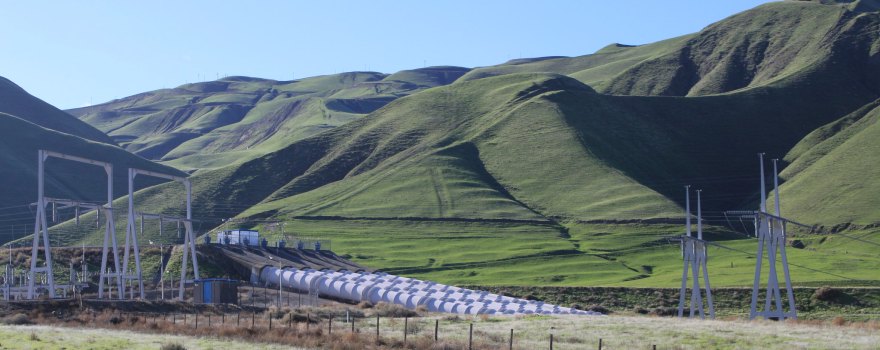
For more information on the State Water Project …
- Click here for more information on the State Water Project.
- Click here for more information on California’s water infrastructure.
Explore more about the State Water Project at the California Water Library
View these documents full screen at the California Water Library.
{{ document.post_title }}
{{ document.publisher }} | {{ document.document_date }}
{{ document.post_content_short }}
 Sign up for daily email service and you’ll never miss a post!
Sign up for daily email service and you’ll never miss a post!
Sign up for daily emails and get all the Notebook’s aggregated and original water news content delivered to your email box by 9AM. Breaking news alerts, too. Sign me up!







